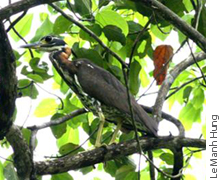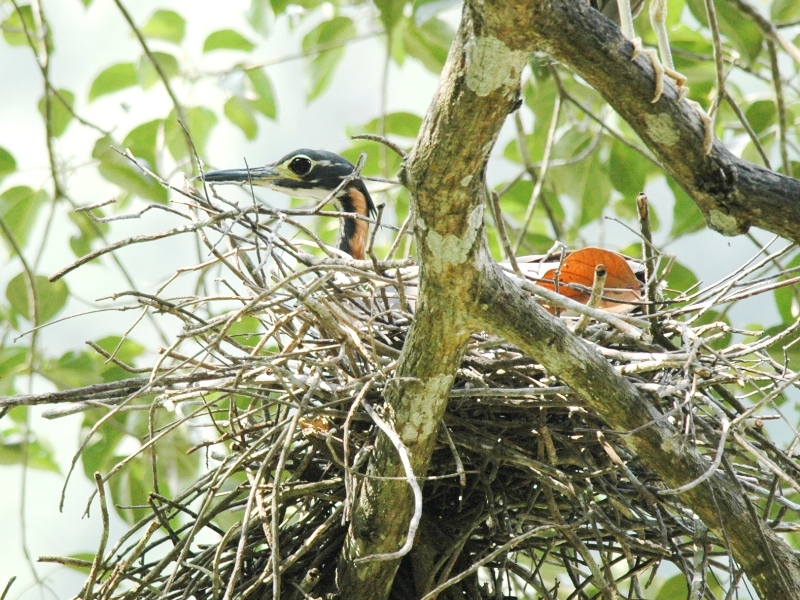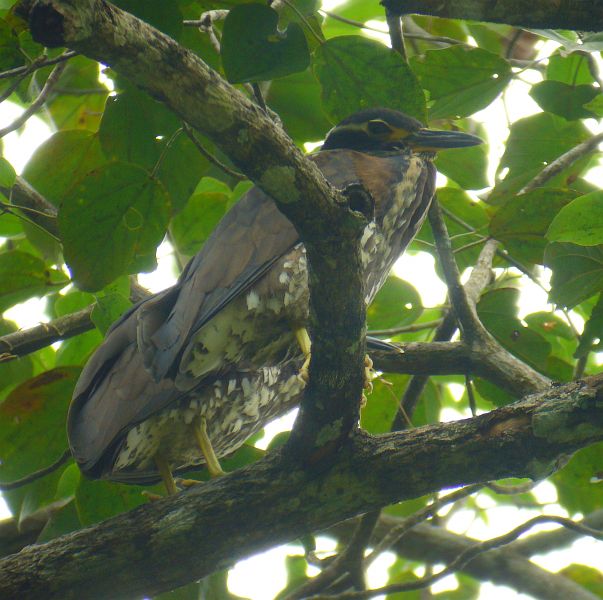
Nycticorax magnificus
SUBFAMILY
Ardeinae
TAXONOMY
Nycticorax magnifica Ogilvie-Grant, 1899, Hainan. Monotypic.
OTHER COMMON NAMES
English: Magnificent night heron; French: Bihoreau superbe;
German: Hainanreiher; Spanish: Martinete Magnifico.
PHYSICAL CHARACTERISTICS
A medium-brown heron with a brown streaked breast and a
white patch on the side of the head. Length is about 21 in (54
cm). Juvenal plumage has brown-black feathering spotted with
buff or white.
DISTRIBUTION
Occurs in Southeast Asia.
HABITAT
Occurs in dense, primary forests with streams and adjacent
marshes. It currently is found only in mid-altitude mountains,
but was likely originally also a lowland species.
BEHAVIOR
A poorly known species, with few having been observed in the
wild. Feeds at night and roosts high in trees during the day.
Has been reported as feeding singly or in isolated pairs.
FEEDING ECOLOGY AND DIET
Diet includes fish, shrimp, and insects.
REPRODUCTIVE BIOLOGY
Nearly nothing is known about the breeding biology of this
species. Nests in tall trees and perhaps bamboo. May nest in
mixed colonies.
CONSERVATION STATUS
Endangered. Only two breeding sites are known, a third was
submerged by a reservoir. The principal threat to the species is
HABITAT
loss caused by deforestation, reforestation with pine
monoculture, reservoir construction, and gold mining. Hunting
is also a threat, even in nature reserves. The species is nationally
protected in China, but the ability of local people to save
the birds may be limited unless education and local conservation
initiatives are undertaken.
SIGNIFICANCE TO HUMANS
This species is severely threatened due to human habitat alteration
and hunting. Local people eat herons, and young herons
of several species are captured for the market. Balancing the
needs of the local population for food with conservation of this
species is a huge challenge.
Other popular Animals
Photo Gallery of - White-eared night heron




 Animalia Life
Animalia Life